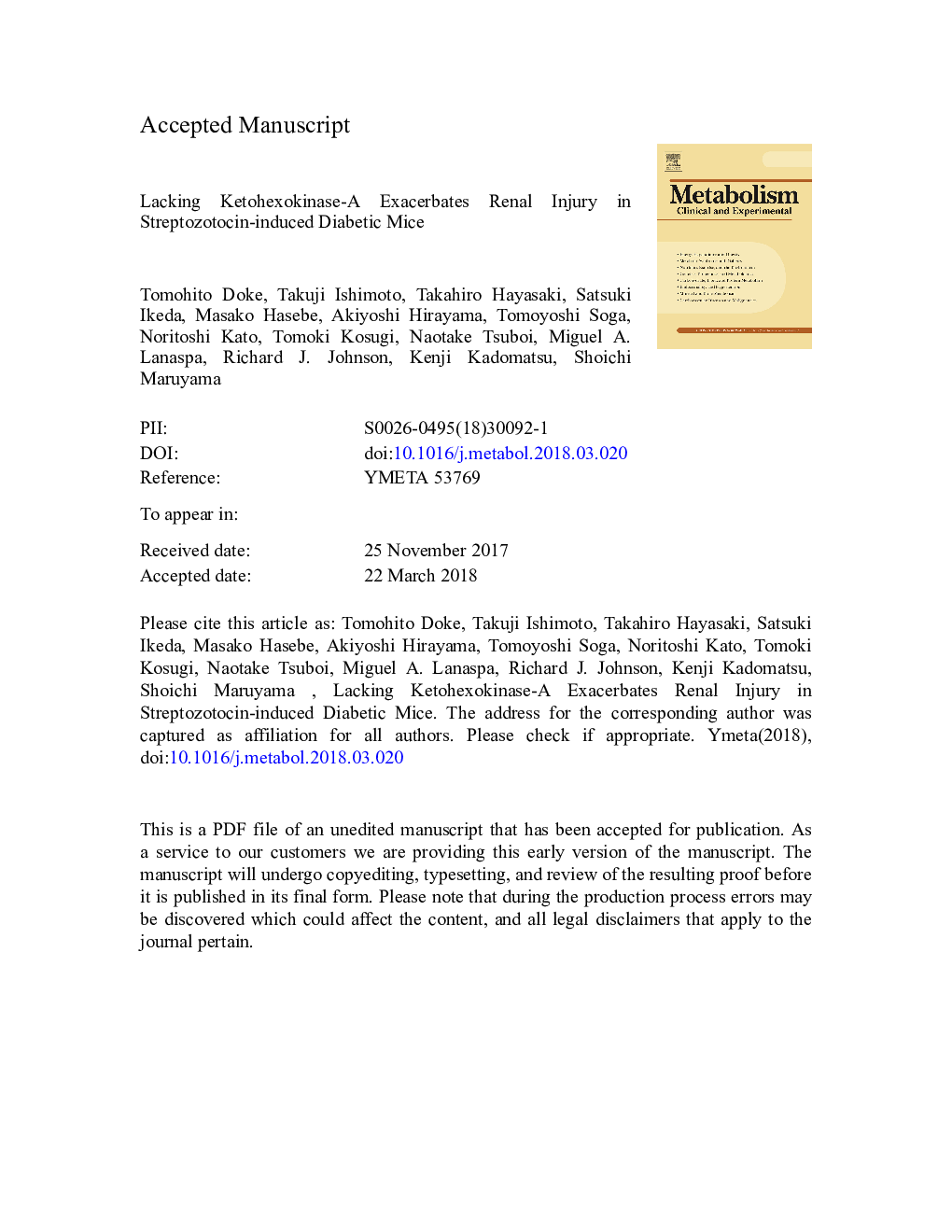| Article ID | Journal | Published Year | Pages | File Type |
|---|---|---|---|---|
| 8632899 | Metabolism | 2018 | 44 Pages |
Abstract
These results suggest that KHK-C might play a deleterious role in DKD progression through endogenous fructose metabolism, and that KHK-A plays a unique protective role against the development of DKD.
Keywords
HIF1αNMNF1PSTZPRPS1OPNMCP-1sirtuin 1iNOSNGALTBARSCTGFPRPPDKDDHAPTCASirt1hypoxia inducible factor 1, alpha subunitKHKNAD metabolismPKCβXanthine oxidaseTubular injuryOsteopontinstreptozotocinDiabetic kidney diseaseOxidative stressdihydroxyacetone phosphatediacylglycerolDAGinducible nitric oxide synthaseConnective tissue growth factorfructose-1-phosphatephosphoribosyl pyrophosphateneutrophil gelatinase-associated lipocalinFructose metabolismthiobarbituric acid reactive substancesNADNAMPASnicotinamide adenine dinucleotidenicotinamide mononucleotideNicotinamidemonocyte chemoattractant protein-1tricarboxylic acid cycleketohexokinase
Related Topics
Life Sciences
Biochemistry, Genetics and Molecular Biology
Endocrinology
Authors
Tomohito Doke, Takuji Ishimoto, Takahiro Hayasaki, Satsuki Ikeda, Masako Hasebe, Akiyoshi Hirayama, Tomoyoshi Soga, Noritoshi Kato, Tomoki Kosugi, Naotake Tsuboi, Miguel A. Lanaspa, Richard J. Johnson, Kenji Kadomatsu, Shoichi Maruyama,
